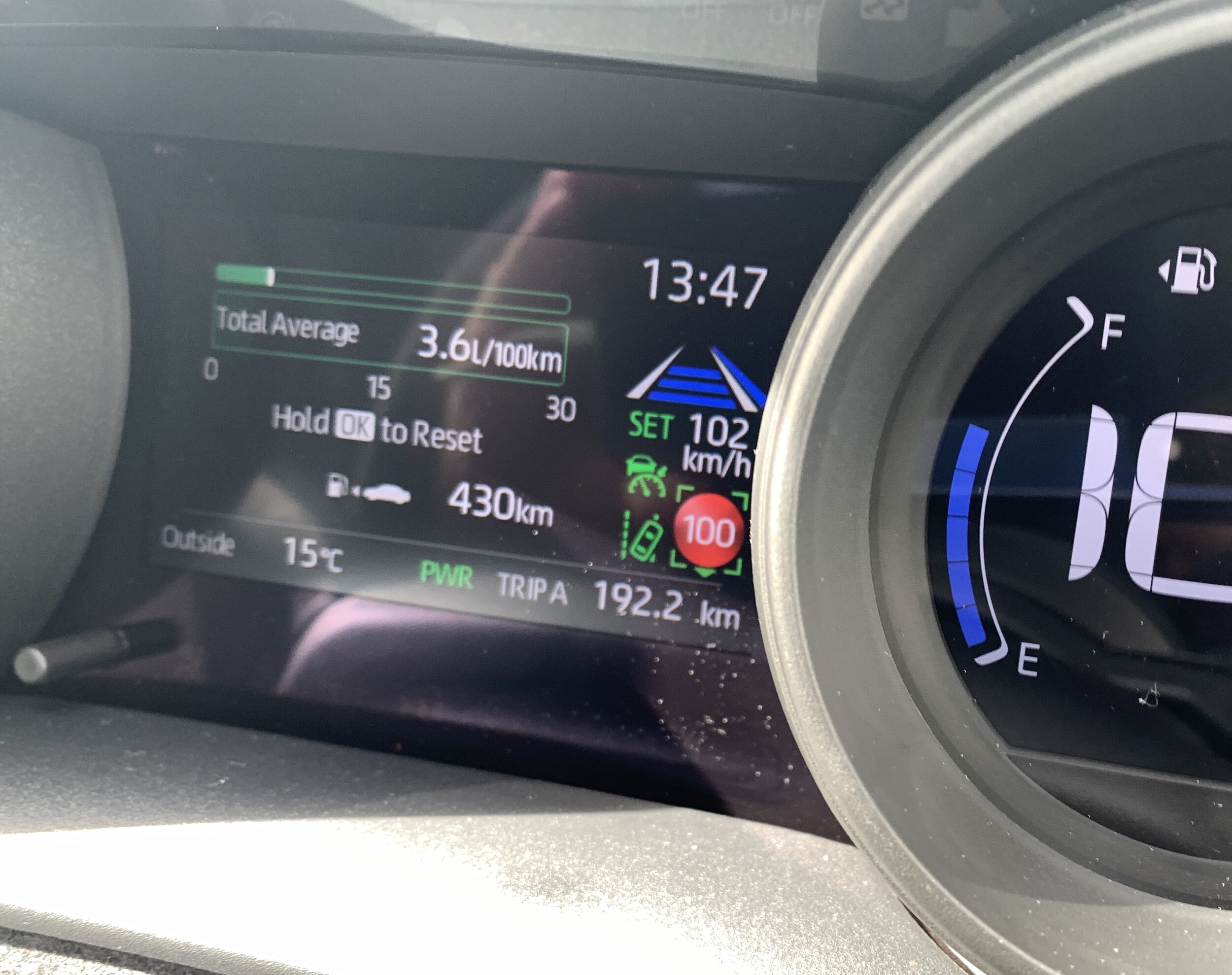Just too much? There’s surely some risk newbies will become bewildered to the point of simply ignoring what the car is relating. Which is surely counter-productive to all the good deeds it can perform.
The ZR has other displays. There’s a head-up projection that’s well designed and comprehensible at a glance; just as it should be. The touch sensitive head unit on the console directly ahead of the transmission lever is right-sized, well sorted in respect to finger-prodding functionality and looks swish. Arrival, at last, of Apple CarPlay integration means you needn’t use any of the in-build functionality, which is just as well, because Toyotas own displays haven’t progressed in years. The fonts, graphics, washed-out colours and slightly whiffy resolution has a staleness and operability is slow. You’d never bother with the in-built sat nav. Google maps are so much faster and better resourced. This, some hard, shiny plastics and use of old-style switches deliver unnecessary cheapness to a cabin that, on the whole, really represents as a step up in quality and style and could, with a bit more effort, have set a new bar for the category.
Given that Toyota has been making hybrids since last century and this is actually the fourth compilation of a petrol-electric drive system to go into a Yaris (though the first for our market), you might start to wonder when a petrol-electric set-up starts to be considered time-worn.
Well, not in this sector. For one, because Toyota alone presents this level of tech in the category and also because this is a fresh approach; not as technically advanced as the system implemented in the RAV4, similar in basics to those in the Corolla, Camry and … ahem .. the Prius but sharper and smarter.
What you’re getting is a three-cylinder version of the more familiar 2.0-litre, four-cylinder, utilising the Atkinson cycle and running a high compression ratio of 14:1.
It’s linked to a new electrical motor producing almost 60kW and 140Nm of torque, along with a lighter lithium-ion battery pack, still driving the front wheels via a CVT automatic gearbox, of course, though even that seems sharpened.
This Yaris is the first to use this new type of battery pack, allowing double the recharge capacity and 50 percent more output. The battery cools through the use of the cabin’s air temperature, negating the need for a stand-alone liquid system.
Impression Toyota has made another step forward increases with operability; the car still doesn’t go wholly electric for prolonged periods, but it does deliver more battery-first involvement: It’s the default when you punch the Start-Stop button at start-up – though, the colder the morning, the shorter the delay before the engine might also fire as well – but once warmed and with a light throttle from standstill you can stay on EV power for almost a kilometre if you don’t go over 40kmh. At higher pace and even under a more enthusiastic approach, the classic Toyota hybrid experience that occurs once underway seems slightly more oriented toward electric optimisation. Hence, I guess, why there’s such a clear fuel-saving benefit.
The thrum that’s a trademark of all three-cylinders is not too obvious here; yes you can hear when the engine is toiling, but it’s not overly obvious. A shame in a way, as it has quite a nice note. When both energy sources are working as one, the car feels quite sprightly and you can feel when the instant torque from the electric motor in lending to the job.
Fun to drive, I hear you say? Well, yes, I’d have to agree with that. It’s quite a world away from those earlier hybrids, where the science project approach was all too obvious.
Of course, there’s a very good reason why Yaris is stepping up for driver involvement. The TNGA was designed to deliver this and, beyond that, the mainstream model is the basis of a genuine hot hatch, the GR Yaris, that’ll be here at year end. Different body (three-door, not five), a substantially different powertrain and drive system (all-wheel-drive) and quite in another league for performance .. yet, underneath it all, the same basic car. I can’t wait.
The ZR Hybrid doesn’t ache for racing stripes, because it’s never sporty. And why should it be? Yet the ride and handling is improved and the bigger footprint is a plus point; all the previous jauntiness has been replaced by a more grown-up feel. It’s settled on surfaces that would jolt the predecessor and is a much more precise-feeling car. At same token, out on the open road, it is less wearying. There’s clearly been huge effort put into making it more refined and much quieter. The engine is rarely outright vocal and, at a steady pace, the mechanical involvement is hardly obvious. More obvious is the tyre roar over coarse chip.





























